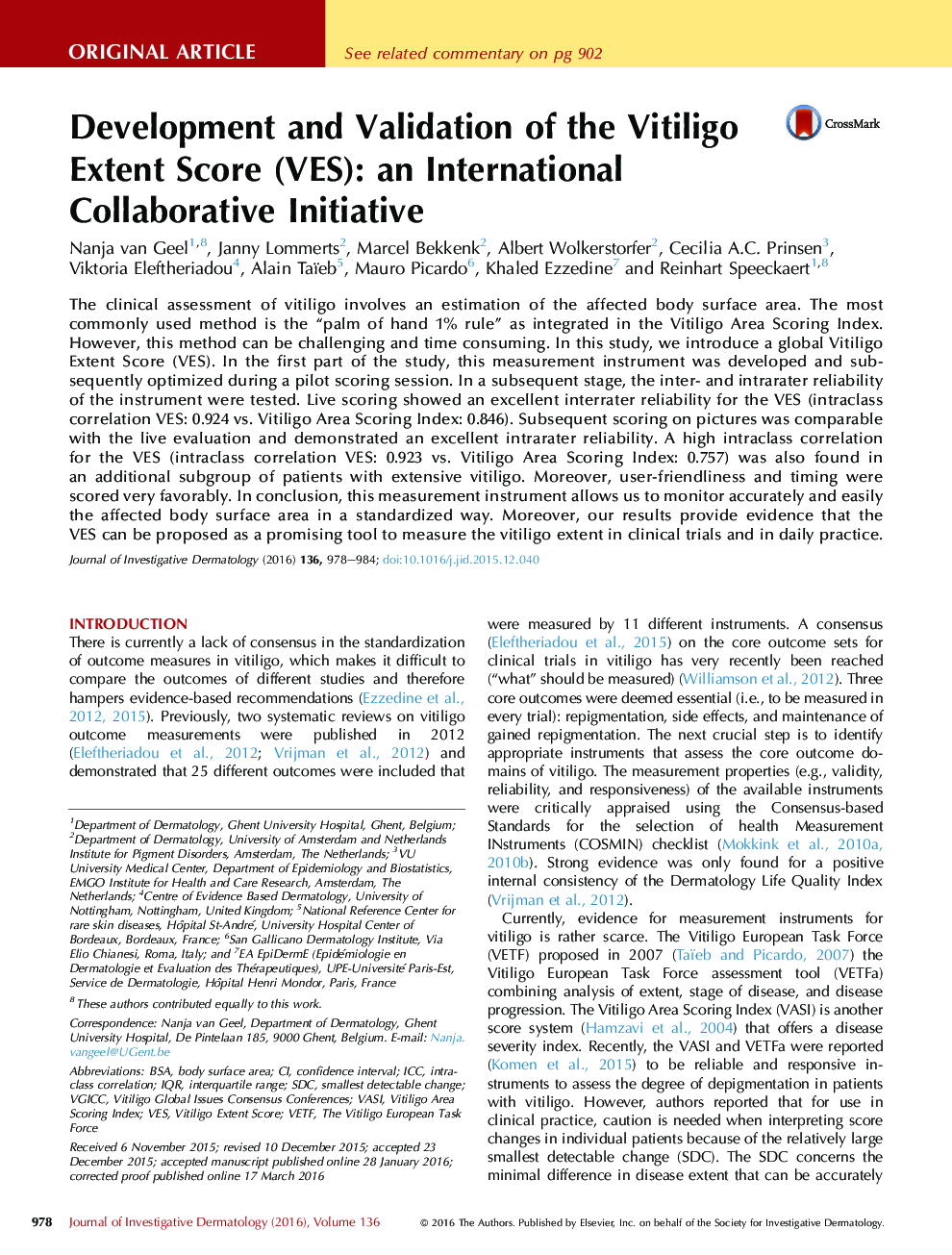| کد مقاله | کد نشریه | سال انتشار | مقاله انگلیسی | نسخه تمام متن |
|---|---|---|---|---|
| 6074960 | 1203491 | 2016 | 7 صفحه PDF | دانلود رایگان |

The clinical assessment of vitiligo involves an estimation of the affected body surface area. The most commonly used method is the “palm of hand 1% rule” as integrated in the Vitiligo Area Scoring Index. However, this method can be challenging and time consuming. In this study, we introduce a global Vitiligo Extent Score (VES). In the first part of the study, this measurement instrument was developed and subsequently optimized during a pilot scoring session. In a subsequent stage, the inter- and intrarater reliability of the instrument were tested. Live scoring showed an excellent interrater reliability for the VES (intraclass correlation VES: 0.924 vs. Vitiligo Area Scoring Index: 0.846). Subsequent scoring on pictures was comparable with the live evaluation and demonstrated an excellent intrarater reliability. A high intraclass correlation for the VES (intraclass correlation VES: 0.923 vs. Vitiligo Area Scoring Index: 0.757) was also found in an additional subgroup of patients with extensive vitiligo. Moreover, user-friendliness and timing were scored very favorably. In conclusion, this measurement instrument allows us to monitor accurately and easily the affected body surface area in a standardized way. Moreover, our results provide evidence that the VES can be proposed as a promising tool to measure the vitiligo extent in clinical trials and in daily practice.
Journal: Journal of Investigative Dermatology - Volume 136, Issue 5, May 2016, Pages 978-984